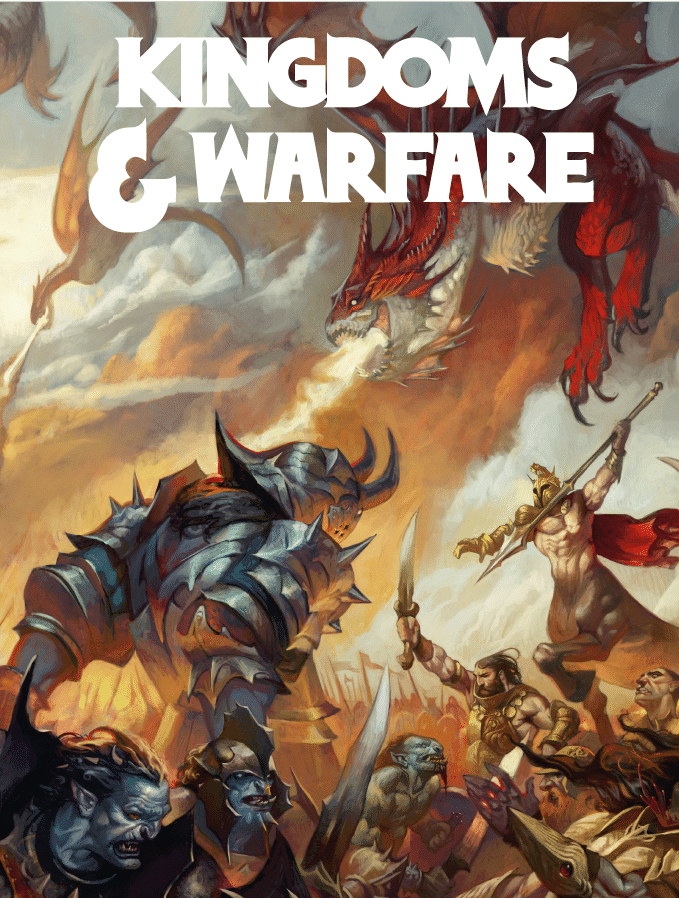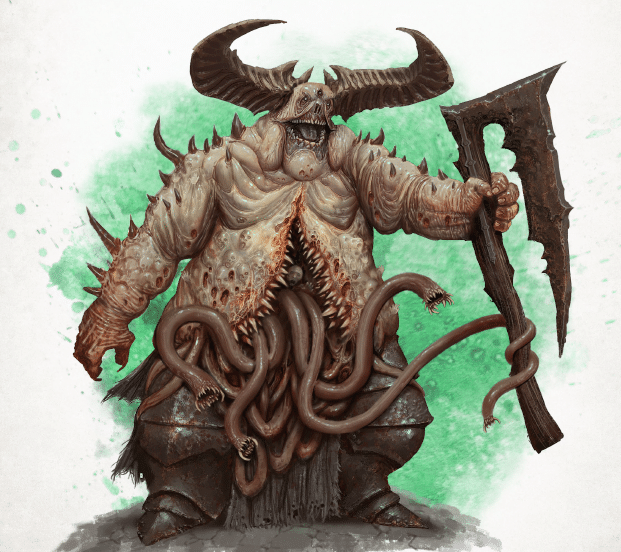Let’s face it: Some of us are just fine with taking our adventurers through a dungeon, killing whatever the DM throws in front of us and having a grand old time stomping out whatever is the challenge of the week in our D&D game. We don’t tend to think on epic scales or divisions. We aren’t striving to be the king or even the king’s guard. It is the same way that some people watched Game of Thrones just for the stories among the characters.
But what if you want more? What is you long to be a part of a party that is changing the face of the world in front of you? Sure, stomping out a group of kobolds is sometimes delightful but you want it more on the epic scale. When you watch Game of Thrones, your worry was about how armies and dragons were changing the whole world and landscape as the Winter was coming.
If you find yourself wanting to be a part of that second kind of story, you want to check out the latest release from MCDM, Kingdoms and Warfare.
About MCDM
Before we go too deeply into this particular book for your campaign to be built around, you should know that MCDM was founded by Matt Colville, who worked as a game designed and wrote some novels before coming into fame somewhat with his Running the Game series on YouTube, where Matt talked about what he saw and thought of as the most important parts of a D&D game.
Those videos were smart, funny, well edited and given away for free. But he became popular enough that when he kickstarted a Strongholds and Followers book in February 2018, he raised over 2 million dollars for it and he was smart enough to start the MCDM company that we know today. And even from those early videos, you can tell that Colville is a fan of epic stories and storylines.
Those ideas certainly had a start in the Strongholds and Followers book but they definitely get ramped up in the new work.
Kingdoms & Warfare
From the get-go, you have to be sold on the idea that having and using and being a part of these organizations is going to be fun. The working assumption is that all the player characters in your campaign are going to be involved in one of these organizations and working together to see it succeed, likely in an climatic battle against the other evil organization(s), or at least the ones that oppose your group’s will.

This ruleset casts these groups into what it calls domains and these domains oppose each other and it creates rules that work in such a way that are a challenge for the opposing groups. Adventurers get a shared pool of Power Dice that they can use extremely rarely to buffer checks or actions in battles. But the rules aren’t just about combat and battle, which is what I think a quick glance could make you think. This is far more than Risk with a D&D topcoat. The other skills like diplomacy, espionage, lore and operations all come into play as your group continues to build and work.
Even in the sense of parties, there are a variety of options for what your group can be. Sure, there is the obvious Adventuring Party group, but there are also other groups like the Martial Regiment, the Mercantile Guild, the Mystic Circle, the Religious Order and more. And while there are some obvious connections like druids easily sliding into the Nature Pact, it doesn’t exclude the Nature Pact from having fighters who have pledged their support or nature loving wizards who are on that team as well.
From here, we get a great deal of information and possibilities about the groups that may oppose us. Some feel obvious but how they are implemented is a treat. Who hasn’t encountered a hag coven? But what if that coven had set its people on the ruling of the world?
But Kingdoms is only part of the book. There is a whole other section that focuses on how you do adventurers and battles with larger groups and with these domains at battle with one another. Of the two halves of the book, Warfare is definitely more rules chunky. And that isn’t all bad. If you are going to play this kind of story, you need rules for how to resolve some of the things that will happen, both when the PCs are present and when they are away.
While it can be a bit much, that much will fall into the DM’s hands mainly. There are some well thought out and helpful Martial Advantages available to every class, so the player that is mainly interested in just her character can just focus on that.
From there, the book has other tools that help you as you plan and plot your own campaign using these rules. The Monsters section is stacked with amazing villains that it would be very fun to use to chew up scenery and characters if they were your Big Bad. Then, they offer a substantial number of Devils of various kinds that are each frightening and challenging in their own way.

(This book has fantastic names for all the NPCs contained within!)
The. book even contains more, with a fantastic set of brand new magical items within and an great adventure entitled “The Regent of Bedegar” that gives you a chance to use these rules right away.
At 328 digital pages, it is a hefty book. You likely won’t be able to pick it up and drop the rules into your existing campaign right away. But, it is a new twist on D&D that we could use if your party has an appetite for it. As much as we all want to hack, slash and loot, sometimes, we want to be heroes, conquerors and more. That they have put it together with truly fantastic art is quite amazing.
The group at MCDM has given us a chance for that kind of amazing story in the rules of Kingdoms & Warfare. While the storyteller in me is drawn more towards the Kingdoms part of the book, the Warfare rules are there and have a purpose as well.
[Disclosure: MCDM provided Nerds on Earth with a PDF copy of Kingdoms & Warfare in exchange for an honest review.]

